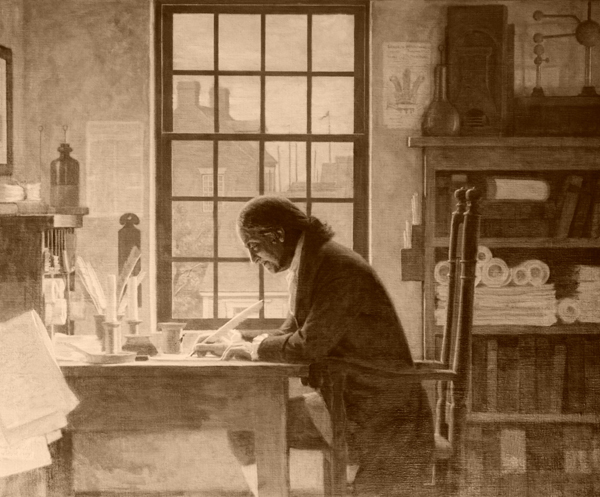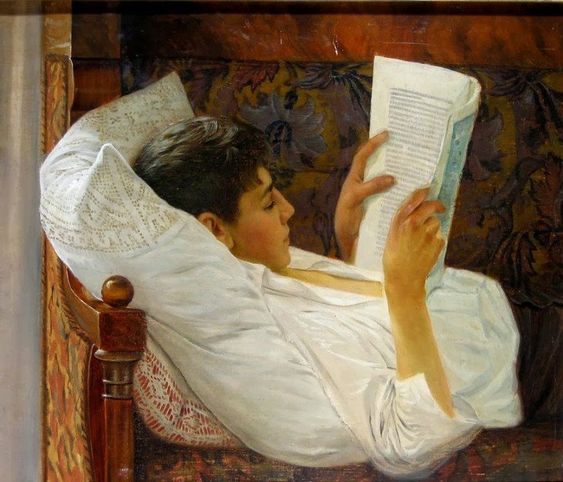
Benjamin Franklin:
> Born into poverty with 16 siblings
> Dropped out of school at age 10
Also Benjamin Franklin
> Got wealthy as a publisher
> Co-authored the US Declaration of Independence and U.S Constitution
Here are 3 methods he used to teach himself how to write well:
🧵
> Born into poverty with 16 siblings
> Dropped out of school at age 10
Also Benjamin Franklin
> Got wealthy as a publisher
> Co-authored the US Declaration of Independence and U.S Constitution
Here are 3 methods he used to teach himself how to write well:
🧵

What I'm about to share with you is short but immensely useful for learning how to write, learn and think.
I suggest you bookmark this thread and read Franklin's autobiography.
If you want to share the love, I'd appreciate a retweet of the first tweet ☝
Let's get you writing
I suggest you bookmark this thread and read Franklin's autobiography.
If you want to share the love, I'd appreciate a retweet of the first tweet ☝
Let's get you writing
Background:
At age 16, Benjamin Franklin comes to the realisation he doesn't know how to write well
“I fell far short in elegance of expression, in method and in perspicuity…”
perspicuity = clarity
Franklin devised a plan to clever plan to become a better writer ...
At age 16, Benjamin Franklin comes to the realisation he doesn't know how to write well
“I fell far short in elegance of expression, in method and in perspicuity…”
perspicuity = clarity
Franklin devised a plan to clever plan to become a better writer ...
# 1 Deconstruct then Reconstruct
Franklin loved to read the Spectator so he used that as his model of good writing.
In his own words:
"I took some of the papers, and, making short hints of the sentiment in each sentence, laid them by a few days, and then...
Franklin loved to read the Spectator so he used that as his model of good writing.
In his own words:
"I took some of the papers, and, making short hints of the sentiment in each sentence, laid them by a few days, and then...
without looking at the book, try’d to compleat the papers again, by expressing each hinted sentiment at length, and as fully as it had been expressed before, in any suitable words that should come to hand...
Then I compared my Spectator with the original, discovered some of my faults, and corrected them.”
Summary
> Find good writing and take notes for each sentence
> Set notes aside and return in a few days
> Try to rewrite the piece using *only* your notes
👇👇
Summary
> Find good writing and take notes for each sentence
> Set notes aside and return in a few days
> Try to rewrite the piece using *only* your notes
👇👇
> Compare your version with the original and take note of your errors
If you're a copywriter or learning to write, you may have heard of the "handcopying" writing technique.
This doesn't work because it doesn't fully activate the critical thinking part of your brain.
By...
If you're a copywriter or learning to write, you may have heard of the "handcopying" writing technique.
This doesn't work because it doesn't fully activate the critical thinking part of your brain.
By...
using Franklin's method, you force yourself to deconstruct and reverse engineer the style of writing you want to produce.
Thus making you a much better writer.
Franklin also had a unique method for improving his vocabulary which brings me to method # 2...
Thus making you a much better writer.
Franklin also had a unique method for improving his vocabulary which brings me to method # 2...
# 2 Turn writing into poetry
This is an interesting one.
Franklin applies a technique that all great learners use; adding a constraint to speed up learning.
Franklin realises writing poetry can improve his writing vocabulary and starts to use a very unusual technique...
This is an interesting one.
Franklin applies a technique that all great learners use; adding a constraint to speed up learning.
Franklin realises writing poetry can improve his writing vocabulary and starts to use a very unusual technique...
"I took some of the tales and turned them into verse; and, after a time, when I had pretty well forgotten the prose, turned them back again."
> Take a story and turn it into poetry
> Wait a few days
> Turn poetry back to original story
Last method... 👇👇
> Take a story and turn it into poetry
> Wait a few days
> Turn poetry back to original story
Last method... 👇👇
# 3 How to master structure
Applying another artificial constraint, Franklin forced himself to master writing structure.
Here's what he did
> Take notes from Method # 1 and jumble them up
> Wait a few weeks
> Reassemble writing using jumbled notes
> Compare to original
Applying another artificial constraint, Franklin forced himself to master writing structure.
Here's what he did
> Take notes from Method # 1 and jumble them up
> Wait a few weeks
> Reassemble writing using jumbled notes
> Compare to original
# 4 Bonus
I know you're thinking "OMG I don't have time for this!"
Here's how Franklin MADE time:
"My time for these exercises and for reading was at night, after work or before it began in the morning, or on Sundays, when I contrived to be in the printing-house alone."
I know you're thinking "OMG I don't have time for this!"
Here's how Franklin MADE time:
"My time for these exercises and for reading was at night, after work or before it began in the morning, or on Sundays, when I contrived to be in the printing-house alone."
Enjoy this thread?
Please
1) Follow me. I write interesting threads like this every week
2) Retweet the first tweet. Free knowledge is worthless if you don't share the love.
3) Check out my free newsletter on writing and creative thinking.
Click 🔽
join.eddyquan.com
Please
1) Follow me. I write interesting threads like this every week
2) Retweet the first tweet. Free knowledge is worthless if you don't share the love.
3) Check out my free newsletter on writing and creative thinking.
Click 🔽
join.eddyquan.com
• • •
Missing some Tweet in this thread? You can try to
force a refresh












